|
Introduction
Outdoor living spaces are becoming increasingly popular as homeowners seek to make the most of their properties. Whether you have a small backyard or a spacious garden, a patio can be a versatile and enjoyable addition. One way to improve your patio’s functionality and aesthetics is by adding an aluminum patio cover. In this blog post, we’ll explore the benefits of aluminum patio covers and why they are a smart choice for any outdoor space. 1. Durability Aluminum is a material known for its exceptional durability. It’s resistant to rust, corrosion, and weather-related damage, making it an ideal choice for outdoor structures. Unlike wood or other materials, aluminum patio covers won’t warp, crack, or rot, ensuring they stand the test of time. They require minimal maintenance, providing homeowners with peace of mind. 2. Low Maintenance Aluminum patio covers are virtually maintenance-free. Unlike wood, they don’t need regular staining or repainting. Simple periodic cleaning with water and mild soap is usually sufficient to keep them looking pristine. This means you can spend more time enjoying your outdoor space and less time on upkeep. 3. Energy Efficiency Aluminum patio covers can provide shade and help reduce the heat that enters your home during hot summer days. This can lead to lower cooling costs, making your outdoor area not only comfortable but also energy-efficient. Some aluminum patio covers are designed with insulating properties, further improving their energy-saving capabilities. 4. Design Versatility Aluminum patio covers come in a variety of styles and colors, allowing you to match them with your home’s architecture and personal preferences. Whether you prefer a modern, sleek design or a more traditional look, you’ll find an aluminum patio cover to suit your needs. You can also choose from different roof styles, including flat, gabled, or curved designs. 5. Increased Property Value Adding an aluminum patio cover to your outdoor space can enhance the value of your property. Potential buyers often see these additions as valuable, functional features that extend the living space and improve curb appeal. 6. Weather Resistance Aluminum is highly resistant to the elements. Aluminum patio covers can withstand harsh weather conditions, including heavy rain, snow, and strong winds. This resilience ensures that your outdoor living space remains protected and usable year-round. 7. Easy Installation Aluminum patio covers are relatively easy to install, making them a convenient choice for homeowners. They are often pre-fabricated or come in kits, reducing the need for time-consuming construction. Professional installation is recommended for the best results, but the process is typically quicker and more straightforward than with other materials. Conclusion Aluminum patio covers offer an array of benefits that can significantly enhance your outdoor living experience. From their durability and low maintenance to their energy efficiency and design versatility, these structures provide long-lasting value for your home. Whether you want to create a shaded area for relaxation, outdoor dining, or as a space for outdoor entertainment, an aluminum patio cover can help you make the most of your outdoor space. Consider this investment to add both style and functionality to your property, allowing you to enjoy the beauty of the outdoors without compromising on comfort and convenience.
0 Comments
 Summertime is here and what that means for those of us living in South is one major thing, HEAT. The heat felt in the southern United States is different from what most of the country gets this time of year. Its not a dry heat, far from it, its a sticky heat. Temperatures in the mid 80's here can feel like 100, and spend just a few minutes outside and you will definitely notice. That wet, sticky, heavy heat is something we all battle, and in the end have to deal with as homeowners living in the south. Spending time outdoors in the summer can be a wonderful time. From barbeques, swimming pools, family hangouts to just a lazy lounging outside, summer is the time of year for enjoyment. However, you don't need to be miserable and irritated just because the heat is up and you can't control the thermostat outside. An aluminum patio cover could solve that worry and add many more hours of fun to these long summer days and nights. To top that, a insulated aluminum patio cover will help you fight that same heat without you ever having to lift a finger. Insulated patio covers feature a compressed layer of foam insulation, pressed in between two sheets of high strength aluminum. Have you ever been inside a walk-in freezer at a gas station? Those use the same panels, with the same insulation, but feature a more industrial look. Ours come in a variety of colors with high gloss white being the most popular. Insulated aluminum panels are also structural, meaning they are very high strength, and are widely used to build schools and many types of buildings in countries all over the world. You can stand on them, walk on them and even jump them, but please be very safe if you decide to try. 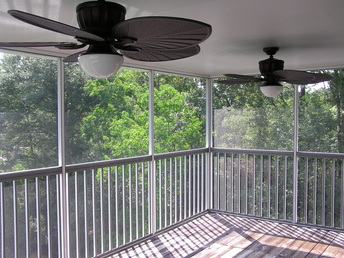 Designed to be long lasting, dependable and durable, insulated aluminum panels are manufactured on average at four feet wide. They can be made to lengths up to 36 feet long, and never lose their strength or durability over those long distances. Now, it is debatable as to the exact degree change you could expect in temperatures under an insulated patio cover. However, an average of 15-20 degree drop is the commonly agreed temperature change, especially in the sweltering heat midday in the summer. In addition to the built in insulation, insulated panels can have optional fan beams hidden inside the panel itself. You simply have wire installed into the panel, and connected at your choice of location inside your home, then hang a fan or two and you're done. Its a great option to have available, even if you can't decide on a fan or lighting system right away. Whether you're looking for a full screened in insulated cover, a screen room, or a riser pan style patio cover, Jack Ray Siding specializes in all of the above and much more. Jump over to the contact page to send us an email, or call us directly for a free estimate. Let us help bring the heat down and the fun up with a beautiful all aluminum patio cover for your home.
That is a very common question, as well as a very fair question. However, answering it can get quite loaded and confusing. So I am going to try my best to give as straightforward and answer as possible. Let's start with the most direct concern with most of our customers, especially in the southern states.
The strength of vinyl siding directly relates to the quality of the brand, and the application of the siding itself. While it may not be cheapest option, middle tier to upper tier brands of vinyl siding offer the best options available for proper installation and durability. Not to knock on the big chain stores, but your best option for the absolute best choice in vinyl siding is a dedicated business that deals directly with the vinyl manufacturers themselves. Below is a brief rundown of the parts of vinyl siding that affect the durability the most. This is a single nail hem, or nailing strip. It is found on the lowest price economy panels, usually found at the large chain stores. This hem offers the "weakest option", and we generally recommend against this. This option, the most commonly installed, is the partial curl nail hem. Found on most medium tier panels, it reinforces the nailing area to give more security under heavy wind loads. This is a full roll over nail hem. Most commonly seen on premium panels, it doubles the strength of the nailing hem and reinforces the primary installation point. Finally, what is known simply as the "Lock". The part that, well, locks into the upper lock. The medium to higher tier brands offer very secure interlocking, panel straightness, and more strength under wind pressure. When it comes to wind, you have to consider that wind either "blows" or "sucks". In the South we get strong thunderstorms, as well as gulf hurricanes that create a volatile environment for the weather. Properly installed, contractor quality vinyl siding can withstand up to 110-150 mph wind loads, and the premium brands can even go as high as 190 mph. Tests are done by the Vinyl Siding Institute, http://www.vinylsiding.org/, and most brands have to adhere to strict standards and requirements. Always look for VSI http://www.vinylsiding.org/ certification, and make sure to hire contractors that use VSI certified products. Will the color fade? Major, VSI http://www.vinylsiding.org/ certified brands of vinyl siding offer rich, vibrant colors that run all the way though the panel, front to back. This gives the best level of resistance and performance in extreme weather conditions for long life, and lasting endurance. The color through enhancements offer a superior barrier against UV rays, and protect against fade and color washout. As well, brighter colors can help to maintain a lower energy bill, but that is a topic for another day. Is it truly maintenance-free? Most salespeople will try to sell you on the "maintenance-free" idea of vinyl siding. While for the most part this is true, there are a few caveats. Vinyl siding does offer flexibilty, weather endurance, fade resistance, and very low upkeep. However, the best option to keep, at least, the fade resistance and appearance up to par is to wash the siding no less than once a year. That very same rule usually applies to your entire exterior as well though. Short of your roof (though that is another debate), all outside home walls should be washed and cleaned annualy to keep the lively appearance and new look of any home.
Vinyl siding will not rot, flake, peel, get termite damage, or ever need painting. It is a plastic resin, made from PVC (polyvinyl chloride), and is engineered to be very durable and long lasting. Although, vinyl siding is not fully resistant to cracking; too close with the weed eater, or hale damage and broken tree limbs. But again, even your roof is susceptible to two of those, and wood is susceptible to all the above damage risks. Lastly, the possible issue as it concerns fire. I will simply give you the explanation directly from VSI's website, http://www.vinylsiding.org/professional/resources/caring-for-vinyl-siding/. "Vinyl siding is made from organic materials and can melt when exposed to a significant heat source. Vinyl is a combustible material, but will not readily ignite unless exposed to flames from an existing fire. Home and building owners with all types of siding should always take precautions to keep heat sources such as barbeque grills, and readily ignitable materials such as dry leaves, mulch, and trash away from the structure". Hopefully, this has answered some of your questions concerning the application of, durability, and maintenance of vinyl siding. At Jack Ray Siding, we only use top quality VSI http://www.vinylsiding.org/, certified vinyl siding. We only buy from established, trusted manufacturers and wholesalers, and we only use top quality brand name products. With over 30 years of experience in installation, maintenance, and repair, Jack Ray Siding has a proven and verifiable history of delivering high caliber workmanship at affordable prices.  Have you been considering an addition to your home? Maybe you're looking to add a new area to relax and get away from the cooped up indoors. Maybe you're just thinking of enjoying mother nature and the cool night breeze. Or, possibly, you are debating more space for your loved ones and yourself to spend quality time together and connect. Whatever the reason, a new home addition is the perfect solution. Now, taking into consideration the the warmer nature of the southern states, a debate has grown surrounding screen rooms versus sun rooms in our area. Its a wise decision to look at the pros and cons of each before you actually purchase one for construction or construct it yourself. While both have benefits and draw backs, I'm going to lend favor to the screen option. No surprise, as this is, of course, what I do for a living. However, I will admit that 3 season, and 4 season rooms (sun rooms) have a certain quality. My main goal is to highlight the value, money savings, and benefits, so that you can make an educated choice for yourself. If you are tired of the pests, mosquitoes, flies, "love bugs", hornets, wasps, yellow jackets and many other flying insects that are populous in the southern states, then a screened in patio or porch is the perfect solution for your needs. We use only high quality nylon and fiberglass screen. It is very durable, to the point of being almost unbelievable. Pet paws, children's fingers, throwing a football in the yard, all these are safe and no hassle for a properly built and screened patio or porch. With all this strength, a breeze can still flow freely. While bugs can fly around all over the place outside, when inside your screened porch or patio you can enjoy the beauty and tranquility of nature without the bother of swatting them all away. Considering the mostly temperate climate that exists in the south, a screen porch or screened in patio is another ideal option for enjoying the outdoors. You don't lose that intimate connection with nature that, unfortunately, a sun room or glass room simply cannot provide. I know many of you will brush that off and say "Well, I can always open the windows and enjoy myself that way". Honestly, if you do that, it is no different than a screen room. Only now you have to worry about glass panes that can break, get filthy, become smudged with fingerprints, and cause all sorts of headache. On that same note, with a screened in patio or screen porch, you have no need for additional HVAC, heating or air conditioning. Screen does not break, it does not smudge, and it almost never gets dirty. With a sun room, those are almost always a primary concern. Glass, by its very design, is meant to be a barrier; to hold in heat and cold air. With a screen enclosure, nature, and maybe a fan or two take care of that for you. As I said before, the southern states tend to stay warm and temperate, and the colder weather never lasts very long at all, unlike the northern and mid-western United States. Taking that into further consideration, a sun room has added future costs that must be weighed when deciding what you want to have built. At the same time, one must remember that that very cooling and heating cost will be amplified at certain times of the year, and will be a continuous addition to already high utility bills. Screened enclosures add absolutely NO extra utility cost, with the exception of the optional overhead fan or light. Lastly, let me tell you about the maintenance of a screened enclosure, or lack thereof. An all aluminum screened patio or screened in porch needs next to no upkeep. Aluminum, by its nature, is a very durable metal. The current advancements in aluminum production and processing create products that are very strong, long lasting, and extremely weather resistant. An aluminum screen room, patio, carport or cover will have built in longevity. Aluminum does not rust, warp, rot, or burn. It is completely resistant to termites, carpenter bees cannot burrow into it, and animals cannot chew it to pieces. The average sun room is built using wood, which can rot, warp, and most certainly burn. Aluminum is very lightweight, as compared to wood, which varies in weight depending on the size of the board. However, wood is always heavier than aluminum. A wood room is more expensive, requires a constant eye on upkeep and maintenance, and depending on your preference, needs yearly painting to help with weather protection. All these add further cost, which quickly adds up and makes the allure of a sun room or wood built enclosure much more daunting and exhausting. If you are anything like me, when you are considering building a new addition, or adding anything for that matter to your home, you look for the best available contractor within your price range. You look for someone with a proven track record of quality work, who isn't afraid to show their prior work, and who offers value and quality, without breaking the bank. A sun room can be a beautiful option, if you are willing and able to spend the money, and keep on spending the money for the life of the room. On the other hand, a screened enclosure is a "one and done" choice. They provide immediate aesthetic appeal, comfort, and satisfaction without any hidden costs tacked on down road. Practically zero upkeep, with noticeable quality make screened patios and porches the best available option for a wonderful addition to any home. If you are considering a screened in porch, or patio, a carports, a deck, or vinyl siding, or even replacement shutters or windows, give us a call for a free estimate. At Jack Ray Siding we specialize in making your house into a home, and adding value with quality, and competitive prices. Our phone always near us and available, and we are more than happy to help you brighten your home and increase your future equity and your happiness. If you have any questions, or would like to discuss this article further, don't hesitate to leave a comment or send us an email directly, or head over to the contact section. |
Archives
June 2015
Categories |


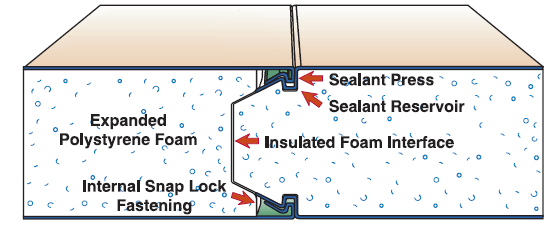
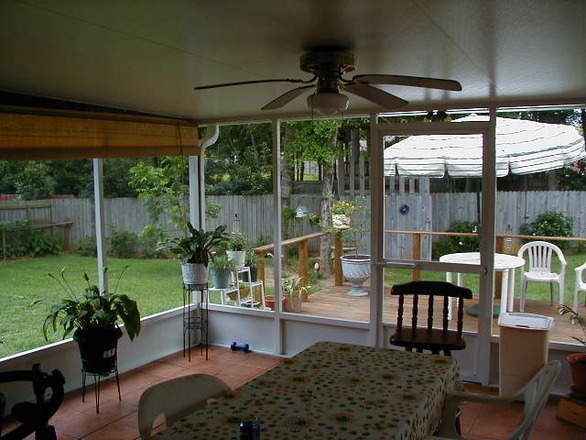
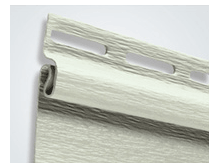
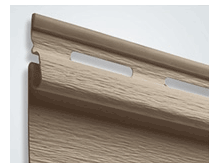
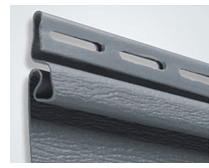
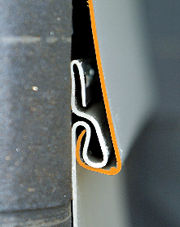
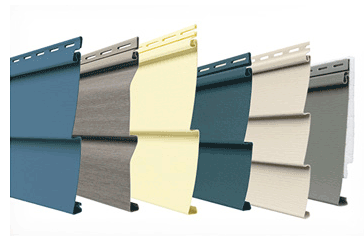
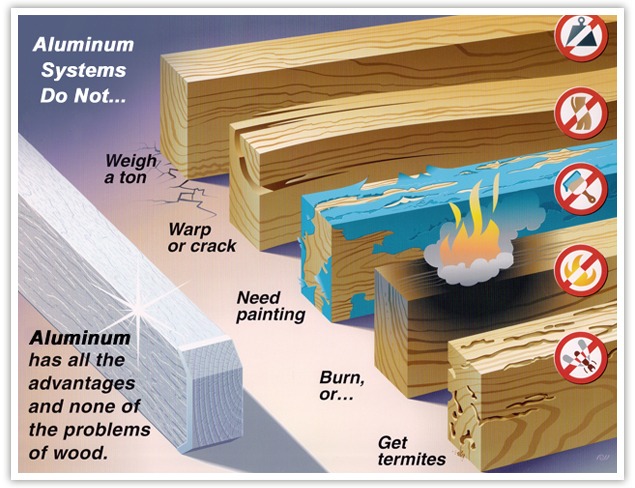
 RSS Feed
RSS Feed